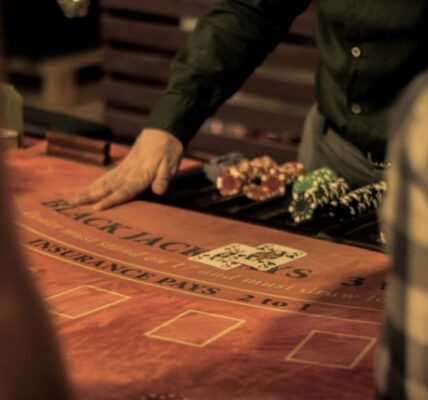Billy Napier is the new football coach at Louisiana, but he’s taking his time before jumping into the job. His methodical approach to the job has some people wondering if he’s not too careful.
LAFAYETTE, LAFAYETTE, LAFAYETTE, LAFAYETTE, LA Billy Napier isn’t in a rush to go there. On a Friday morning early this month, the football coach sits in his office at the University of Louisiana, leans back in a red leather chair, and calmly awaits the inevitable question: What is he still doing here?
It’s harsh, but the 42-year-old seems to be able to see right through unnecessary nuance. So, yes, ask aloud why perhaps the hottest coaching commodity on the market stays at a relative outpost less than an hour’s drive from in-state juggernaut LSU but a world away from all the money, resources, and bells and whistles given to college football’s elite.
Napier should have departed for better pastures by now, on paper. He’s worked with Nick Saban and Dabo Swinney, and he’s won big in a school that isn’t known for winning. UL is coming off back-to-back 10-win seasons, which are the only ones in school history.
2 Related
He has a complicated motive for remaining. It’s a result of upbringing. It’s partly because he had to reassess everything after a roller-coaster start to his career. For him to leave this location, which has an active marsh in the center of campus and is surrounded by some of the finest talent in the nation, something extraordinary would have to happen.
“This tiny Cajun culture,” Napier adds, he adores.
He’s his father’s kid, unassuming and unassuming, who grew up in rural Georgia on high school football fields with his father coaching at the same high school for more than 20 years. In the FCS, Napier was a quarterback, and his first full-time employment was in the MEAC. He declined UL’s offer of a new car as one of his contract’s benefits. Instead, he drives his own generic, years-old white Ford Explorer to work every day.
After his name was linked to job vacancies at Mississippi State, South Carolina, and Auburn over the previous two offseasons, he issued comments confirming his commitment to UL.
It’s not as if he hadn’t considered leaving. He claims that fielding calls during the coaching carousel each winter makes his head spin.
He listened because, like everyone else in this sport, he’s pragmatic and a competitor. He believes in his strategy and loves a challenge; else, he would not have gone to UL in the first place. One term that employees often use to describe him is “methodical.”
Despite all the Ragin’ Cajuns have achieved so far, he believes there is more work to be done. It was great to win a portion of the Sun Belt last season, but they want the entire thing this year. They aim to shock Texas in Saturday’s season opener. They aim to revenge their defeat to Coastal Carolina last season, reach a New Year’s Six bowl, and establish themselves as the Group of 5’s best program.
After all of that, he may be ready to move on.
Perhaps not.
In college football, the window of opportunity for up-and-coming coaches may shut fast. Napier, on the brink of his fourth season in Lafayette, is unconcerned about his future.
Patience has been a virtue that has brought him to this location and time. He’s not going to change now.
Billy Napier was a quarterback for Furman University in the FCS. Getty Images/Alex McMahan/NCAA Photos
THE THING TO KNOW ABOUT NAPIER: He’s been that person before. He was just 38 years old when he took this position, his first as a head coach, but he’s already on his second act as a coach. He used to be the young and cocky hotshot who thought he had it all figured out.
Swinney promoted a 30-year-old Napier to offensive coordinator when he became the full-time head coach at Clemson in 2009, making him the Power 5’s youngest playcaller. Swinney described Napier as “one of the best young coaches in the country” who “will be a head coach eventually.”
Swinney dismissed him two years later.
Napier had to drive home and tell his wife that he was no longer working after Clemson dropped from third to tenth in the ACC in points per game. He’d put his whole life into his job, and not in a healthy manner. He was a self-described workaholic who arrived at work at 6 a.m. and didn’t leave until after midnight.
He admits he was cocky at the time and adds, “I’ve been on that roller coaster when you believe you’re going to the top.” “And suddenly the rug is yanked out from underneath you.”
It was a humiliating experience to be dismissed. He claims that he was compelled to re-center himself and accept his reality.
Napier received a call a few weeks after he was fired that would put his fresh perspective to the test. Saban wanted him to come to Alabama, but there was no vacancy for a coordinator or even a position coach. Instead, he offered the position of analyst, implying that Napier would not be a hands-on coach.
Former head coaches Butch Jones, Steve Sarkisian, and Mike Locksley were brought in before Saban popularized the analyst position. If Napier accepted, it would be a highly public reversal of his professional trajectory, taking him back a decade to when he was a graduate assistant just out of college.
Yes, he said.
Napier reaffirmed some of his fundamental principles as a coach and reevaluated others after having the chance to learn from perhaps the greatest coach in college football history. He started to see the need of structure and the advantages of delegating to others. Of course, everyone put in a lot of effort, but he observed how they tried not to become mired down in details. In other words, with so many people in supporting positions, Napier’s workaholic might find a better balance in his life, perhaps taking a day off now and again.
He became offensive coordinator Jim McElwain’s right-hand man, and when McElwain departed to become the head coach at Colorado State the following season, Napier followed, returning to on-field coaching. He answered yes a second time when Saban phoned to invite him back to Alabama as a receivers coach a year later.
Napier, meanwhile, got terrible news just as he was reacquainting himself with Tuscaloosa. His father was diagnosed with ALS just before the season was about to begin.
“The truth is, look, he’s about to go on a really tough downhill fall,” Napier explains. “There is no treatment, no doctor, no medication, and there is nothing.”
Seeing his father struggle with such a debilitating illness was both heartbreaking and inspirational. In the face of such an unjust result, he observed neither self-pity or temper tantrums.
“That transforms you,” adds Napier, “and I believe for the better.”
Billy Napier’s career was revitalized after learning from Nick Saban. Montgomery Advertiser’s Mickey Welsh
A pyramid of 3D boxes acts as a kind of route map for the next season on the top level of Louisiana’s new sports complex, on a wall leading to Napier’s office. Each regular-season opponent, the Sun Belt West, and the Sun Belt Conference as a whole have their own boxes. Each box has one of the program’s fundamental principles written underneath it, such as “INTEGRITY” and “RESPECT.”
A box with the Ragin’ Cajuns emblem above the logos of each of the Group of 5 conferences sits atop the pyramid, a reference to the stated aim of becoming the best team in the G5.
The phrases “BE THE DIFFERENCE” and “MAKE AN IMPACT” are engraved underneath that box.
They’re guiding values that Napier’s father, who passed away in 2017, instilled in him.
“He could see the ALS thing was eating me up, that I was out of sorts and finding it difficult,” says Napier. “‘Look, we’re not going to make excuses here, and we’re not going to complain,’ he said as he set me down. We’ll attempt to create an impression. We’re going to attempt to make a difference with this.’”
Those two concepts have a strictly football perspective; they’re about assisting teammates and the program as a whole. But, according to Napier, it’s also a lesson for the young coaches here about taking the correct decision when they come to a fork in the road in their careers and making a good impact.
His time at the fork in the road arrived early, and he made the correct choice. He followed his father’s advice and played four seasons at Alabama. He subsequently expanded his horizons by attending Arizona State University, and as a 38-year-old, he found himself in the running to take over a UL program that had fallen on bad times. Mark Hudspeth, the former coach, had been dismissed and had some of his victories revoked owing to NCAA penalties.
Napier understood what a talent-rich region it was from his experience recruiting at Alabama. Saban had previously transferred from Michigan State to LSU after seeing that no state in the nation generated more NFL players per capita than Louisiana.
Brian Maggard, the athletic director at UL, viewed Napier as a man well above his years. He talks slowly and carefully, taking extensive notes.
Maggard claims that the only guy like Napier he has ever encountered is Bill Snyder, Kansas State’s white-haired dean of coaching who retired at the age of 79. But it was Napier’s concept that really struck Maggard.
He came in with a strategy in mind. He was anxious to bolster the Cajuns’ support staff in the same way that Alabama did, and since they couldn’t afford the same wages as Saban, he relied on volunteers and young coaches looking for their first job.
His staff meetings resemble Alabama’s, with Napier addressing a group of around 40 people each morning as he lays out the day’s agenda. That doesn’t include people in the weight room or the nutrition staff, which didn’t exist when he arrived.
A worker who spent time at Alabama was asked how Napier and Saban differed before a recent session. He paused for a moment, then another, before shaking his head in despair.
He explains, “One person coaches offensive and the other guy coaches defense.” “That’s all there is to it.”
Napier doesn’t overlook even the tiniest detail. Napier reportedly questioned an athletic official why the team’s website wouldn’t enable the roster to show heights down to the quarter-inch. While most colleges would adjust Levi Lewis’ height to a quarterback-friendly 6 feet, Louisiana has him listed as 5-foot-10.
Lorenzo McCaskill, a linebacker, joined the program soon after Napier’s debut in 2017 and quickly felt the effect of his new coach’s strategy. He was blown away by Napier’s degree of organization as he brought a disjointed locker room back together.
McCaskill adds, “He can tell you what he’s going to do in the next 15 minutes, the next hour, the next two hours.” “He’s got his whole day planned out, and he’ll be able to tell you what he’ll be doing this time next year.”
As a consequence, the program has a record of 28-11 in three years. The Ragin’ Cajuns also begin the season rated for the first time in modern history.
“I’m not sure if’surprise’ is the right word, but it has definitely occurred extremely fast,” Maggard says of UL’s swift climb under Napier. “Did I believe he had the ability to accomplish this and have a feeling of success in his early years? Yes. But to the point of 10-win seasons in the second and third years? I’ll say that it’s been a really enjoyable experience and ride so far.”
But, like with any ride, it raises the issue of when it will stop.
Napier is paid $2 million per year by UL, which is less than a handful of Power 5 assistant coaches. This summer, Bryan Harsin made the long-awaited move from Boise State to Auburn, where he would earn $5.25 million per year as head coach.
While there was some internal concern when Napier’s name was linked to the job vacancy in South Carolina, Maggard maintains he was not concerned Napier would quit. Maggard thinks he has a good idea of the boxes Napier wants to check in his next job, but they haven’t been checked yet.
Maggard adds, “My goal is to keep him around for as long as humanly feasible.” “He can and should be the winningest coach in program history, in my opinion. He wouldn’t be happier if this was his first and final position as a head coach.”
Billy Napier’s Ragin’ Cajuns have achieved two 10-win seasons in a row, the only such streak in school history. via USA TODAY NETWORK/Scott Clause/Montgomery Advertiser
SOURCES FROM THE INDUSTRY Napier is unlikely to stay in Lafayette for the rest of his life. There’s a sense that he’ll go when the proper position presents itself, one with a successful track record, a dedication to football, and a clear line of communication from the school president to the athletic director.
Maggard says he’ll be glad to assist Napier with his next chance, which he describes as “one he truly wants.”
In the future, Virginia Tech might be an interesting alternative if it becomes open, and LSU’s potential is hard to ignore given its proximity.
While Napier waits for those tough talks, he’s happy with his current situation. He admires his president’s “passion for sports” and how well he gets along with Maggard, whom he refers to as a “rising star.”
That’s not even mentioning the players. Twenty of the team’s 22 starters are returning from last season. With Lewis back at quarterback and several young great receivers eager to make an impact, the offense is set to be even more explosive. With Zi’Yon Hill causing havoc on the line and Bralhan and Eric Garror roaming the secondary, the defense may be outstanding.
Because of how he recruited and built his team, Napier has been able to remain for as long as he has. These youngsters, he claims, are unique. They’re not waiting for the day they’ll be recruited to arrive.
“I love to play, I love to be a part of the squad, I love the things that come with this game,” he adds. “You know, I’m having a great time with it.”
Coaching the players here and being a part of the community reminds him of what his father did at Murray County High School in Chatsworth, Georgia, when he was a kid. He didn’t have the greatest skills, but he managed to create something over the course of two decades.
Napier grins and giggles to himself as he recalls a middle school experience.
Dad claims he was offered a number of jobs back then, but this time he was particularly interested in one that would pay more. While this was alarming in and of itself for Napier and his brother, Matt, it wasn’t the worst of it.
The employment was with a competitor in another county.
The guys were in a state of disarray. Murray County was their only bet. They despised their adversaries.
No way, they told their father.
They said defiantly that if he departed, “We’re not going!”
That’s possible that it was the only time they ever threatened their father, which makes Napier chuckle once again.
Dad remained, and the school board gave the home a new roof as a token of appreciation.
His son remained at UL for another three decades, and UL awarded him a $1 million increase.
It’s interesting because the circumstances seem to be so unlike on the surface, yet they feel eerily similar from Napier’s vantage point.
It’s obvious that Napier is clinging to a form of football that is more pure than what he will encounter at the next level. “There are a few things that come with it,” he adds flatly.
That’s not to suggest he doesn’t think the way he teaches will work at a high-profile program. He’s certain it can, but he’s still trying to figure out how.
“How is it going to look?” he wonders. “How do you get the level of quality and speed that you desire?”
He says that he has seen a lot.
“In that sense, I believe I’ve been lucky,” he adds. “So I feel like I can tell when I’ve got something fairly decent.”





